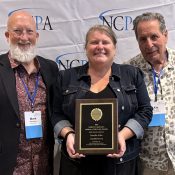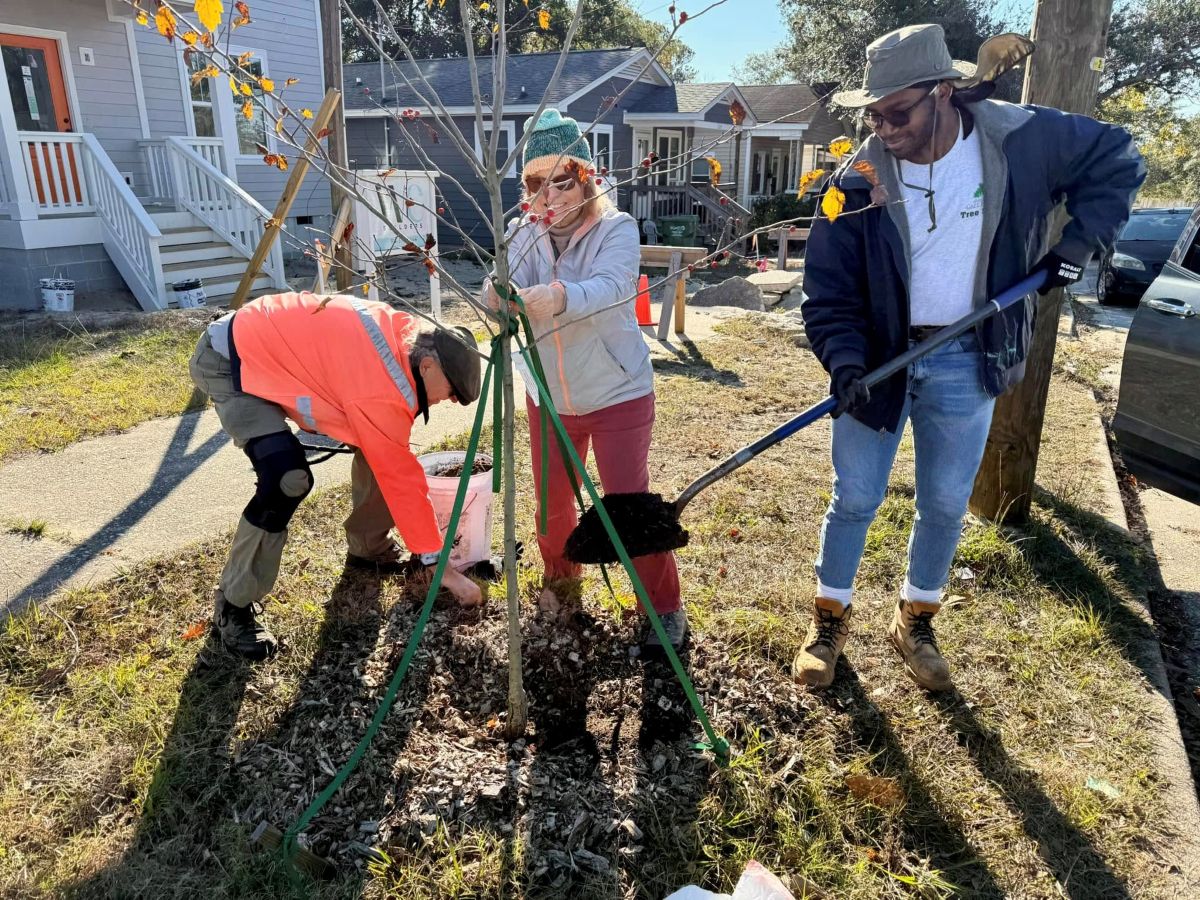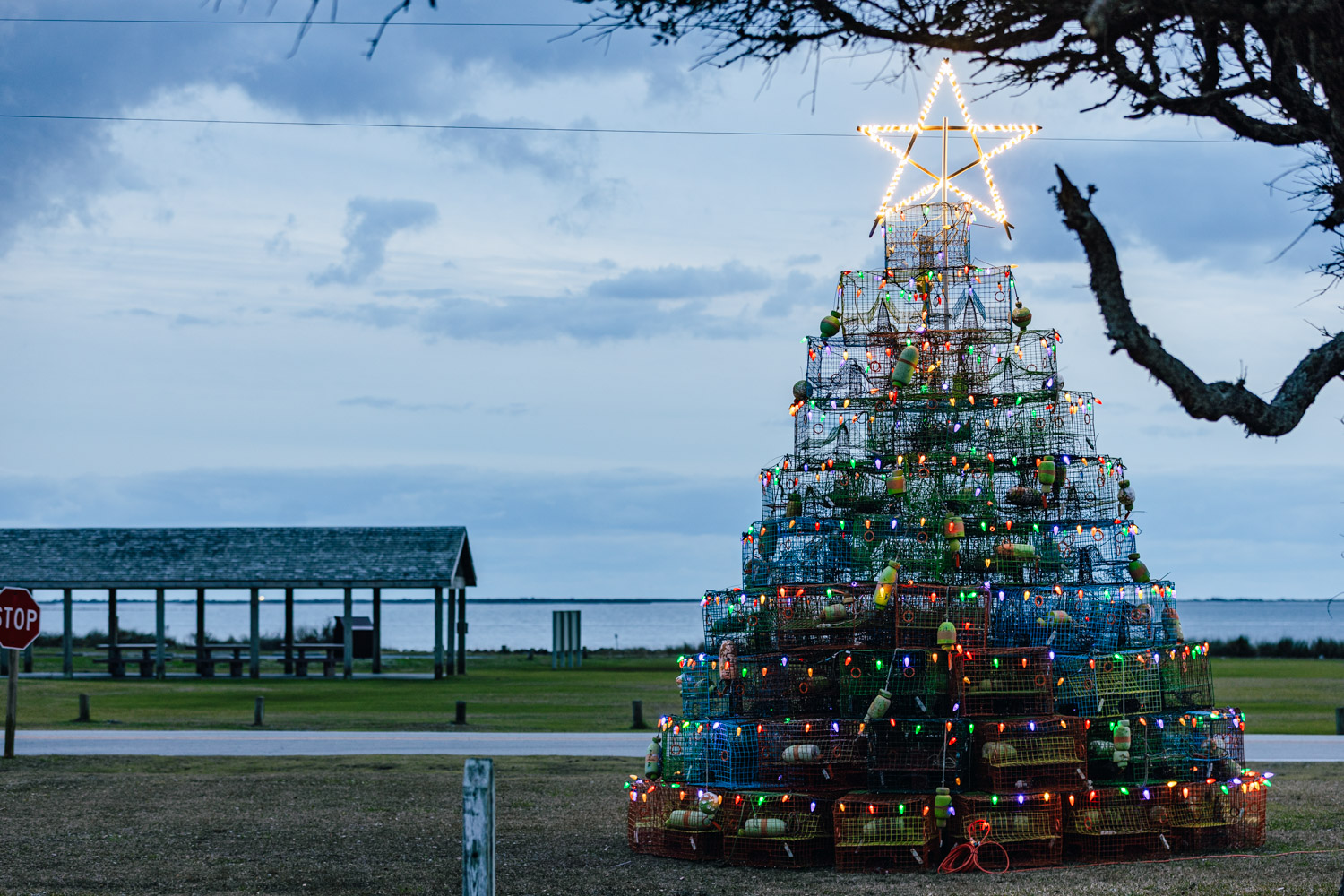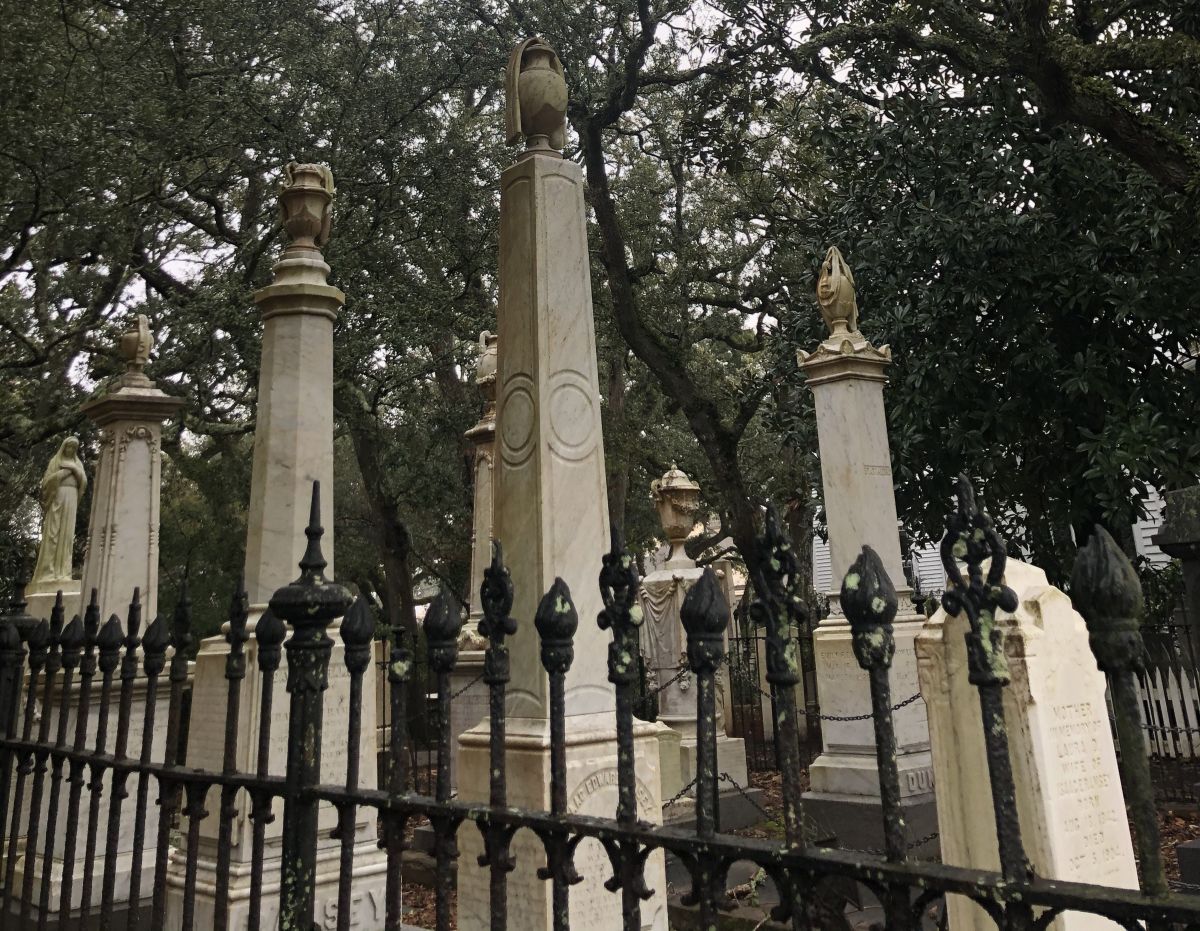
Stepping through the wrought-iron gate flanked by the First Baptist Church of Beaufort and Ann Street United Methodist Church, the Old Burying Ground offers a quiet respite from bustling Front Street in Beaufort, North Carolina’s third oldest town.
The low-hanging branches of gnarled live oaks tangle above most of the 300-year-old cemetery on the 400 block of Ann Street, casting shadows on the worn dirt paths that meander between the seemingly organized fenced-in family plots next to simple headstones wedged like crooked teeth between the ornate, weathered monuments, obelisks and statues.
Supporter Spotlight
There’s an area that appears to be an open space near the corner of Craven and Broad streets under a tree that Carteret County native Bill Lewis has determined is the unmarked grave of 13 of his ancestors, including Thomas Lewis Sr., born 1740 and died 1815.
A lifelong historian and genealogist of the Lewis family, Bill recently retired from the defense industry and splits his time between Morehead City and Virginia.
He told Coastal Review during a telephone interview that he has always known where his family was buried in the centuries-old graveyard. The location has been part of his family’s oral history for generations.
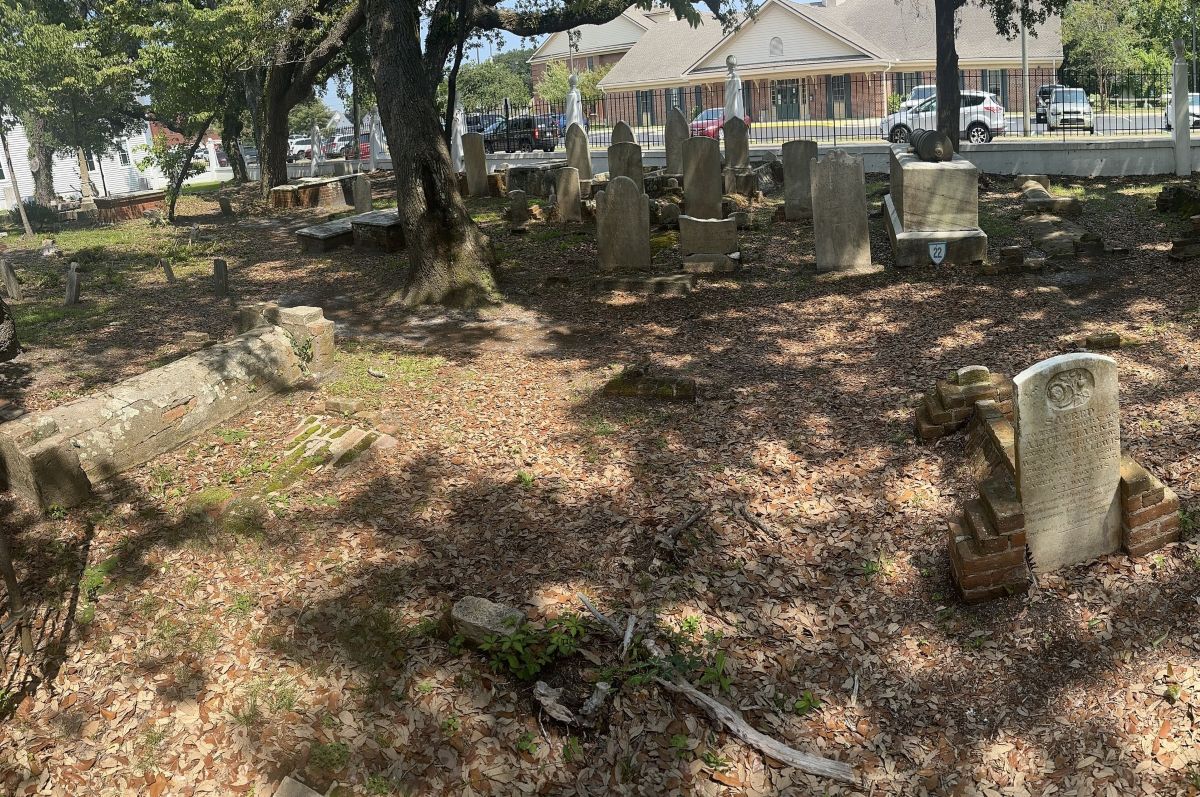
He decided about three years ago, after his father and aunt died within days of each other, to expand on the family history research he inherited from them, and prove to some skeptics that his ancestors were in those unmarked graves.
The Old Burying Ground
Beaufort, first known as Fishtown, was established in 1709 and the street plans for the town that were designed in 1713, and are still in use. Around 1724, the town deeded the lot to the wardens of St. John’s Parish, the first Anglican church in Beaufort, for the church and, presumably, a cemetery. Though speculation is that the land was used as a graveyard before 1724, documents state.
Supporter Spotlight
“The Old Burying Ground grew up around the building used for sessions of the Court and for reading the service of the Anglican Church in St. John’s Parish,” according to the Beaufort Historical Association, which manages the graveyard.
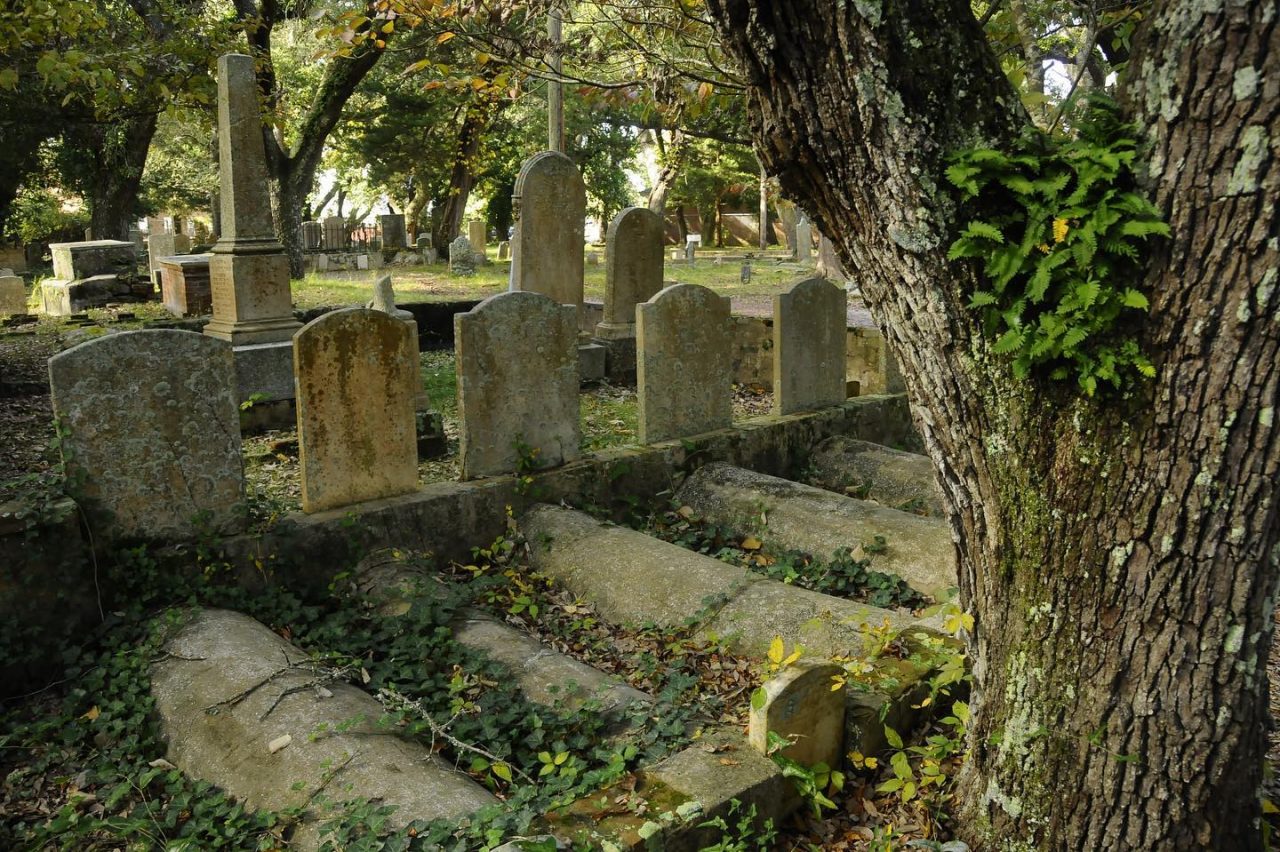
The property was transferred to the town in 1731 when an adjacent lot was added but was full by 1828. The graveyard was enlarged in 1851, 1855 and again in 1894 by the Baptist and Methodist churches that have stood on either side of the graveyard’s Ann Street gate since the mid-1800s. The Methodist congregation’s first building erected in 1820 now houses Purvis Chapel AME Zion Church, on the corner of the Old Burying Ground at Craven and Broad streets, according to the nomination form.
The graveyard has around 500 marked graves, with about half from before and during the Civil War, which took place between 1861 an1865, 150 between 1865 and 1900, then a handful of 20th century markers.
“The whole area with its lichen-encrusted stones shaded by great trees is pervaded by an atmosphere of age, peace, and pleasant melancholia that makes it one of the most memorable spots in one of North Carolina’s most picturesque communities,” reads the National Register of Historic Places nomination form submitted in 1974 for the nearly 3-acre graveyard. “The range of tombstone design is quite remarkable, from the primitive grace of the simple cypress slabs to the sober functionalism of the long brick grave covers to the ornate memorials of the Victorian period.”
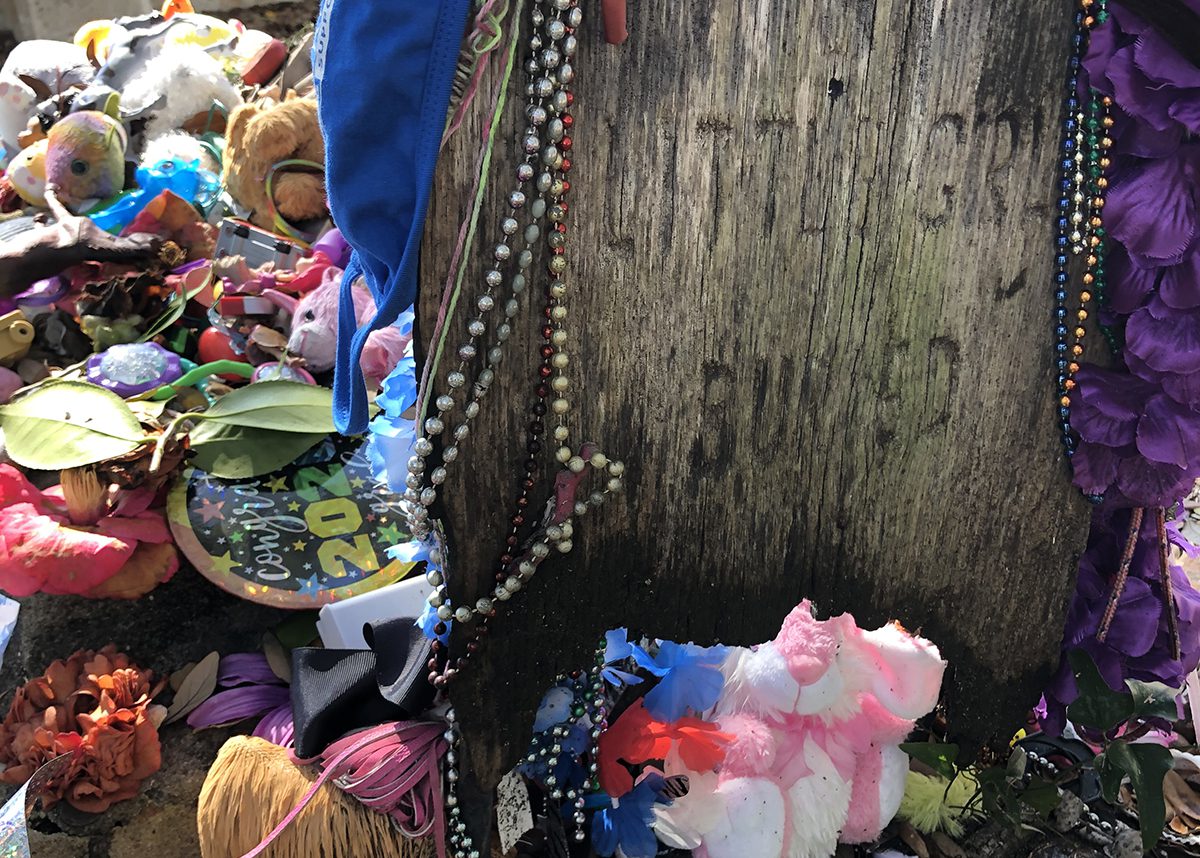
Visitors can take self-guided tours using a map provided by the Beaufort Historical Association, the nonprofit that manages the graveyard, to see where the girl is buried in the barrel of rum, the monument topped with a cannon for Capt. Otway Burns, who was an American privateer during the War of 1812, the soldier from the British Navy who was buried standing up in full uniform facing England, the grave of a romance rekindled after decades of separation because her father didn’t approve, or the northwest corner, which is the oldest part of the cemetery.
“The corner looks empty, however a 1992 archeological survey confirmed that there are many graves in this area. It is probable that some of the unmarked graves contain victims of the Indian wars whose skulls were cleft with tomahawks of hostile Coree and Neusiok Indians. It is recorded that in September, 1711 the area had ‘been depopulated by the late Indian War and Massacre,” according to the association.
The Lewis ancestors
The Old Burying Ground holds “the history of our family roots, where Thomas Lewis, an often-overlooked progenitor, is buried alongside David Lewis and his wife. My siblings and I were captivated by our grandfather Raymond and father’s tales there. The cemetery was our playground, sparking imaginations with stories about our ancestors, including whimsical claims that Thomas was born a pirate and one of the first settlers in Carteret County,” Bill Lewis notes in his family research.
Bill is a native of the Promise Land, which is a neighborhood from 10th to 15th streets on the sound side of Morehead City, and a graduate of West Carteret High School. The Promise Land, Harkers Island and Bogue Banks were settled in the late 1800s and early 1900s by Cape Bankers, pronounced Ca’e Bankers, when these fishing and whaling families moved to the mainland after their settlements on Shackleford Banks experienced a series of devastating storms.
In his research, Bill introduces himself as “a proud descendant of Ca’e Banker and Waterman Thomas Lewis Sr. (1740 – 1815),” and he draws inspiration from his late father, Jerry Thomas Lewis (1937 – 2023), “a steadfast Promise Lander and beacon of strength” and his mother, Edna Faye Garner (1938 – 2013), who “came from a determined Salter Pather squatter family.”
His late father was in the military and traveled extensively, but every time they were home in Carteret County, they would visit the cemetery to put flowers on the unmarked graves. “He would say, I want you and your brother and sister to go out here in this graveyard and find Thomas Lewis Sr. Well, my dad new there was no headstones,” he told Coastal Review.
“We embarked on an exhilarating adventure through time as my father took us to a mysterious graveyard, where history whispered through the wind. He paused by an ancient oak tree, excitement gleaming in his eyes, and pointed to an elongated grave. ‘Can you believe this? This is the resting place of your great-great-great-great-grandfather, a son of a pirate!’ His enthusiasm was contagious,” Bill continues. “We were reminded of our family’s rich heritage in Carteret County, where the earliest Lewises settled between 1635 and 1730, helping to shape the community during its formative years.”
Bill said during the phone call that he pored over documents, records and other resources to corroborate the family lore. Once he had substantial proof, he approached the town with the idea to have a headstone installed marking his family gravesite.
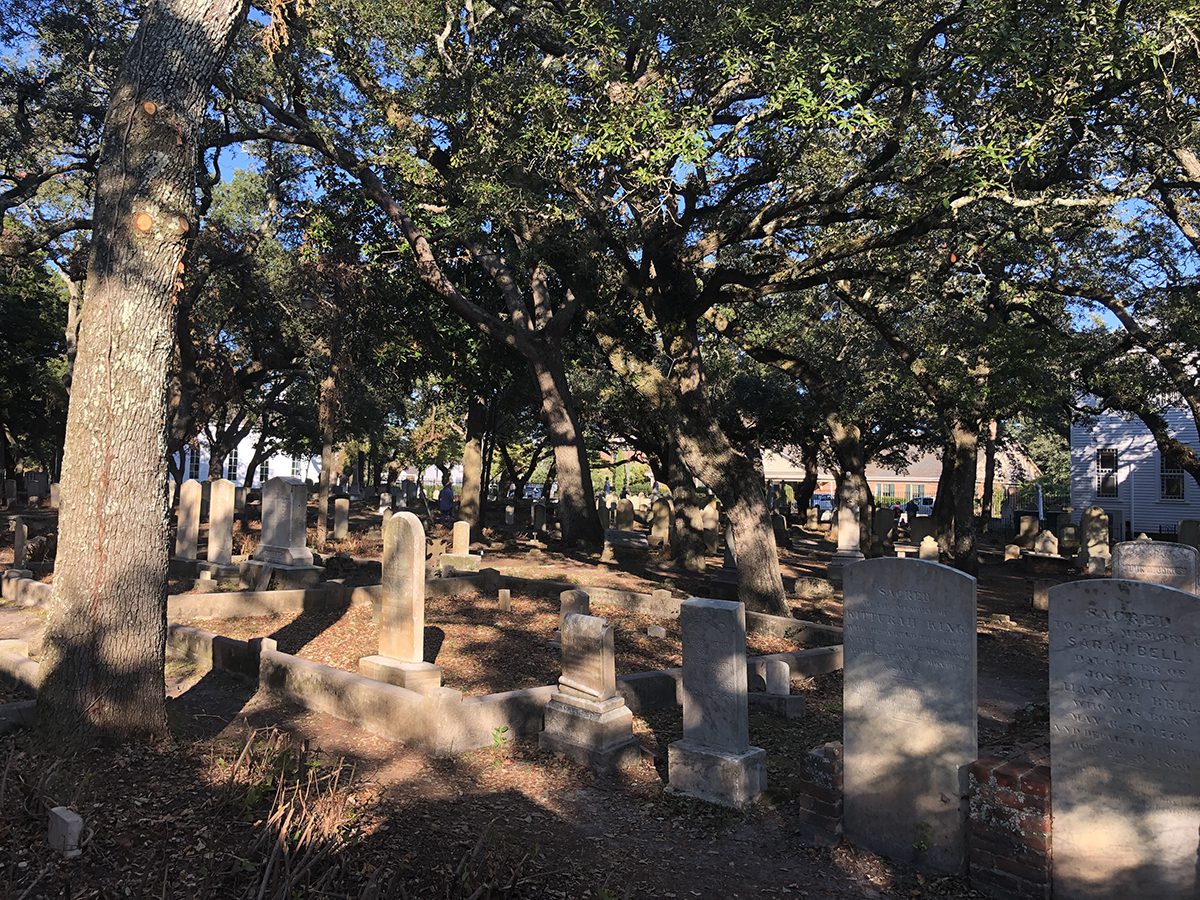
The Carteret County Historical Society oversees the History Museum of Carteret County, where Bill volunteers, and has been asking for donations to purchase and install the proposed 30-inch by 78-inch ledger, which, in this case, is a piece of stone about the size of an interior door the length of a grave, and the 13 footstones expected to be 8 inches by 4 inches.
He told Coastal Review Wednesday that, so far, they had raised around $1,700 and needed close to $5,000 for the simple marker they have designed, and are still taking donations. Call the society at 252-247-7533 for information.
Town of Beaufort Planning and Inspections Director Kyle Garner said in an interview Thursday that he has been working with Bill Lewis for the last year on the proposed headstone.
Bill “has done extensive research,” Garner said, “it’s amazing what he has been able to find.”
Garner added that the graves could have been marked at one time, but the marker could have been wooden and is no longer there.
Because the cemetery is listed on the National Register of Historic Places, Garner and Bill Lewis have been consulting Melissa Timo, the historic cemetery specialist at the Office of State Archaeology, to make sure the proposed marker wouldn’t degrade the cemetery.
Timo explained to Coastal Review that the state has limited information on the cemetery and “I don’t believe that the cemetery has been 100% surveyed archaeologically” by ground penetrating radar or similar.
“There was a limited archaeological survey done in 1991 where they opened shallow trenches in what appeared to be ‘open areas’ in the north-central part of the cemetery,” Timo continued. “No surprise, their work reveal that the area wasn’t free from graves at all. There were dozens of unmarked graves and potential graves,” but the digging was just deep enough to expose the tops of grave shafts and not into the burials or human remains themselves.
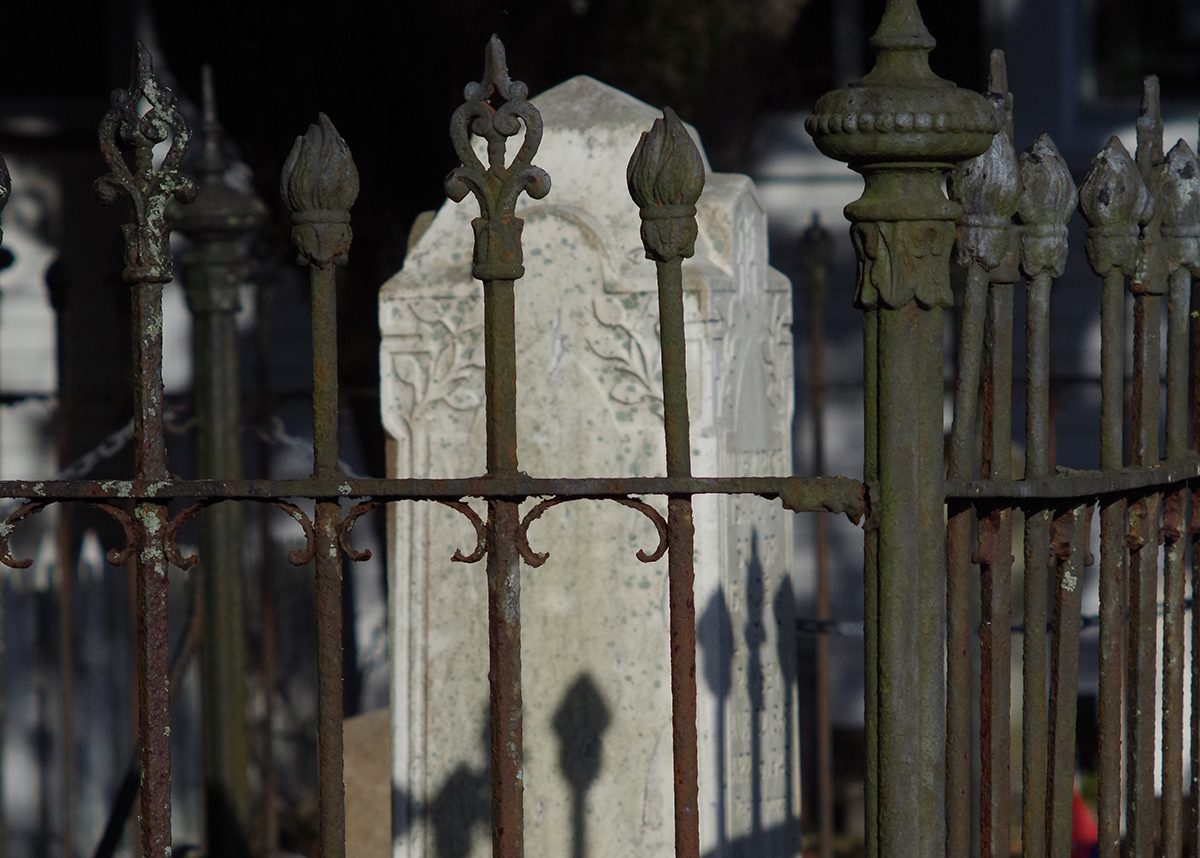
Timo said that while this survey doesn’t appear to line up where the Lewis ancestors are, “it is very telling for the possibilities in the section he’s concerned about. I tell people that what’s on the surface in a historic cemetery rarely, rarely matches what’s underground,” Timo explained. “There are probably a great deal more people in that cemetery than we expect. Additionally, since this is an urban cemetery, popular but hemmed in on all sides, we might expect people to be much more tightly aligned than a rural cemetery with plenty of room.”
Beaufort Historical Association Executive Director Michael Tahaney said in an interview that the Beaufort Historic Site is looking forward to including this newly publicized Lewis family heritage and the new headstones on tours of Beaufort’s Old Burying Ground.
“The watermen and whalers were invaluable to the formation of coastal village settlements that grew into the Carteret County towns of today. I’ve spoken with several of our long-term docent guides who have very little previous knowledge of these unmarked graves. The headstones will be a testament to the family’s legacy,” he said.


